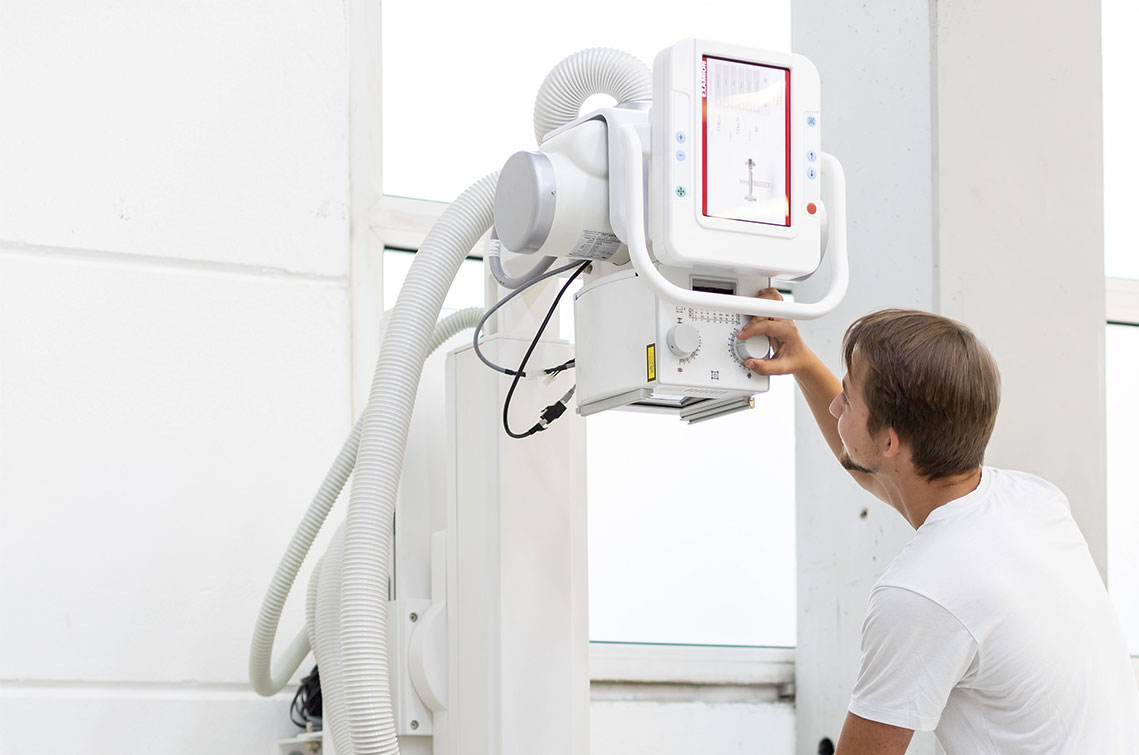Optimum image quality through correct radiation dosage
X-rays were discovered as early as 1895 by Wilhelm Conrad Röntgen. He received the first Nobel Prize in Physics for the discovery of these new rays. Today, of course, we use X-rays mainly in the medical field, but also in other areas, such as archaeology or the examination of paintings and art. Our X-ray equipment as well has been used for these application, and in 2021 EXAMION X-rayed the Nebra Sky Disk.
What are the factors that influence the quality of the X-ray image? To answer this question, we should first take a closer look at the basic functioning and generation of X-rays.
One of the most important components is the X-ray tube which is under a vacuum. Inside the X-ray tube there is a cathode, which is strongly heated, and a metal anode. The electrons set into circulation by the glowing cathode are slowed down when they hit the anode, whereby almost 99% of the energy is converted into heat and disseminated. The remaining energy is converted to short-wave electromagnetic radiation, the so-called “bremsstrahlung” or X-ray radiation. Bremsstrahlung is a continuous spectrum. It is also called "soft radiation". It is suitable for "classic" X-ray material such as bones or metal implants. It is important to know that the "softer" the radiation, the more can be absorbed. The radiation exposure therefore increases.
So-called "hard radiation" is better suited for tissue; it penetrates the tissue much more easily and thus the radiation exposure is also lower. Hard radiation, or characteristic radiation, is produced by the quantum-physical interaction between the bombardment electrons and the electrons of the metal anode. When the voltage in the X-ray tube is increased, an electron of the anode is brought to an increased energy level by the bombardment electron. When the excited electron falls back to a lower energy level, the characteristic radiation is released. The spectrum of hard X-rays is defined by sharp intensity peaks.
When the two types of radiation are superimposed, a typical X-ray spectrum is produced (see figure). The higher the tube voltage, the greater the proportion of characteristic "hard" X-ray radiation.
The correctly applied X-ray voltage of the generator is therefore decisive for the optimal image representation; it defines how hard or soft the radiation is and accordingly how well the radiation is absorbed.
Our X-AQS software supports optimal imaging and includes a tool for image optimisation, the so-called organ filter, for both the human and the veterinary sector. It creates better drawing behaviour in the X-ray image via tonal value optimisation. The X-AQS software also includes voltage values for the organs to be X-rayed, which are specified according to the guidelines of the German Medical Association.
For more detailed information about our X-ray software, please feel free to contact us and a member of our competent staff will answer all your questions.
